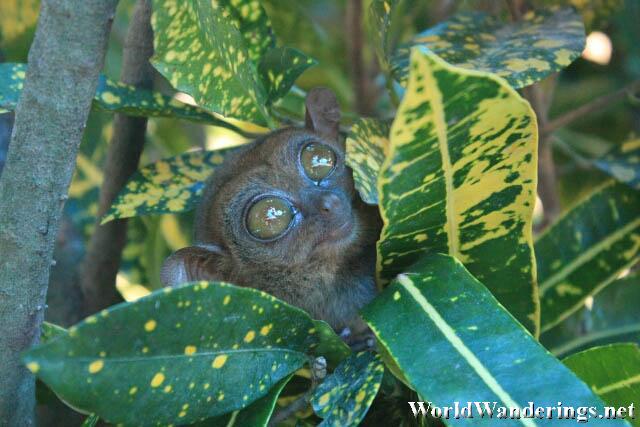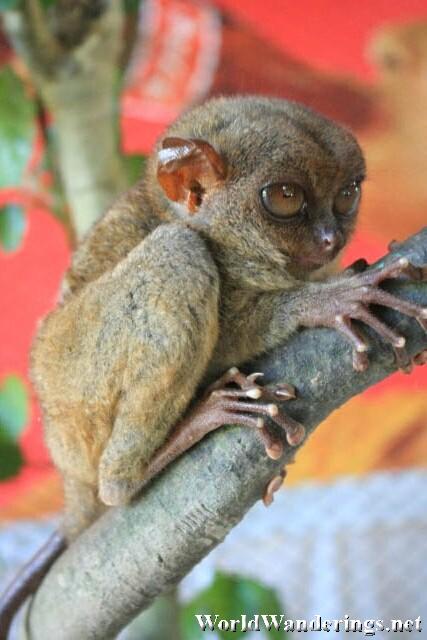After that nice cruise along the Loboc River, my plan was to go to the Tarsier sanctuary in another town. I asked a policeman on duty how I should go about going there. He told me that there is a place nearby to view a tarsier. I was having second thoughts on patronizing these establishments since they are not known to take good care of these creatures. The real tarsier visitor center should be the best place to view them. However, since the policeman said that the viewing area was just nearby, I relented because of time constraints.
He requested a friend of his to bring me to the tarsier center. His friend was on a motorcycle and he willingly let me on it and drove me there. I asked his friend how much the ride was but he respectfully declined and drove off. I was thinking how lucky I was to have this kind of service and how nice the people here are. The tarsier center was just a kilometer or two from the river cruise area. The tarsier center is just a small covered enclosure which has a lot of potted plants inside. Visitors need to register to view the tiny creatures and surprsingly there was no entrance fee.
The teenager at the registration area who saw me come in asked me who I was and why I was with a policeman. I didn’t even know that he was a policeman, and thought that he was really nice to offer a ride. I just jokingly said that I was a big shot and that he should know me. Anyway, I proceeded inside the viewing area, where there were a lot of plants. If you do not pay attention, you will not notice small creatures clinging on to the branches of the plants.
A tarsier is a primate which makes it one of our close relatives. In evolutionary terms, they are quite old and have been existing for millions of years. It is also considered the world’s smallest primate. Being a noturnal animal, sleeps during the day and hunts in the night. As a result, it has huge eyes that dominate the tarsier’s face. They mostly stay on the branches of trees to avoid predators and hop from one branch to another.
Most Filipinos adore the tarsier because of its size and its huge eyes and it has already become a symbol of Bohol. In this tarsier visitor center, there are several tarsiers on the plants but it takes some time to find them since they can hide pretty well. It is strictly forbidden to touch them much less hold them. One would have to be patient and wait for them to climb on to an open branch. Most of the time, you would see them sleeping, since they are supposed to be nocturnal in the first place. Additionally, it is very important that visitors do not use a flash when taking photographs of the tarsier. Though some visitors still tend to “forget” to do this. It would seem to be that these tarsier visitor centers are a paradox since they claim to be for the preservation of the species but they openly let visitor view the tarsiers during their sleeping time. To their credit though, these centers have staff which follow visitors around the center to make sure they do not bother the tarsiers. The Department of Environment and Natural Resources issues certificates of compliance to these visitor centers to make sure that the tarsiers are treated well.
I can’t help but adore these cuddly little creatures, they look like Yoda from Star Wars with big saucer eyes. They are no bigger than your hand. When they were awake they would look around the plants for food – they love to eat insects. Like an owl, they can also turn their heads a 180 degrees, much to my discomfort. The tarsier visitor center sees its fair share of visitors everyday, and there is a donation box for the food of the tarsier. Actually, since the tarsier only eats insects, I don’t know why they need so much money for. I hope it goes to the preservation of their habitat which is slowly being decimated by man. And knowing Bohol, they would be more than eager to make sure the tarsier will always have a place to stay.
[xmlgm {http://www.worldwanderings.net/kml/LobocRiver.kmz}]





